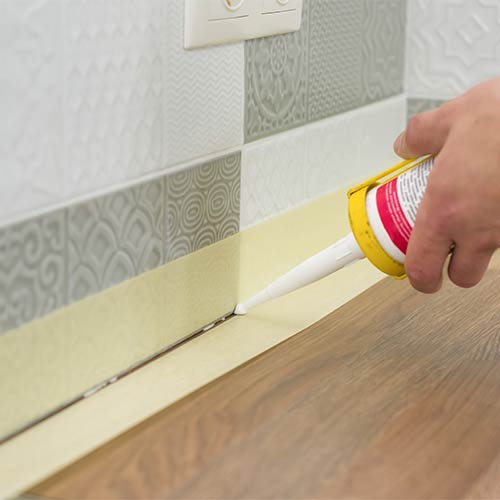Find answers to some of the most common questions about Mulco products. If you can't find the answer to your question here, please contact us for more information.
Frequently Asked Questions
Find Answers to Your Questions

Frequently Asked Questions

Q: How should I store unused Mulco® products?
A: If you are left with water-based sealant and want to keep it for future use, fasten an airtight cellophane cover over the tip. This will help preserve the sealant for a few months.
If you are left with solvent-based sealant, fasten an airtight aluminum cover on the tip. This will help preserve the sealant for about two days. Force out a few inches of sealant before reuse.
Always check the expiration date on your sealant before opening it.
Find the Right Sealant for Your Project

Coverage Rate in Linear Metres per 300 ML Cartridge

Coverage Rate in Linear Feet per 300 ML Cartridge
Q: How much sealant do I need for my project?
A: The length of sealant you should be able to get out of a single cartridge (the "coverage rate") depends on:
-
the width of the juncture you need to seal, and
-
the thickness of the sealant bead, which you control by how high or low you cut the nozzle of the cartridge.
Examine these charts to determine the coverage rate (in metres or feet) for your specific project. Then divide the total length of the juncture you need to seal by the coverage rate you found using the chart. Round up to the next whole number. That is the number of cartridges you should buy.
Explore Sealant Products

Q: What do the numbers and letters (batch codes) on Mulco® products mean?
A: The sequence of numbers on both tubes and boxes is called the batch code. The first set of two numbers (87) indicates that the product was manufactured at a U.S. site. The second set of two numbers (27) refers to the Temple plant. The fifth number indicates the last digit of the manufacturing year (for example, 9 for 2019). The next two numbers are for the week of the year, and the last three digits are for the batch number of the week. Below that you see a six-character code and it is for the tube number of the same batches.
You can use the batch code to figure out approximately how old a product is when you are storing sealants.
View All Products

Q: How does Mulco® ensure the quality of its products?
A: Mulco prioritizes the quality of every phase of the manufacturing process.
Unlike cheaper sealants, Mulco products are mixed in a vacuum to ensure a smooth finish. Then they are lab-tested to verify characteristics like consistency, colour and ease of application.
When a product meets specifications, it is packaged using sophisticated equipment, and the amount of product in each container is checked before it is delivered.
Find the Best Sealant for the Job

Q: How can I properly dispose of leftover sealant or caulks?
A: There are three R’s to remember when dealing with leftover sealants and caulk:
-
Reduce the amount of leftover sealant by purchasing only the amount needed for the job.
-
Reuse your extra sealant, when possible, by giving it to a neighbor, friend or charitable organization in its original, labeled container.
-
Retire water-based and chemical-based sealants by emptying the cartridges onto an old newspaper.
Allow the leftover sealant to dry out in a well-ventilated area, away from children and pets. After a few weeks, discard the remains into household trash.
Check your local regulations before disposing of unused chemical-based sealants.
Q: At what temperature should I apply the sealant?
A: When applying sealants, there is a temperature sweet spot for water-based and solvent-based products. For best results, it is recommended to apply these products in an environment between 15° C and 30° C (59° F and 86° F).
Be sure to take this into consideration before starting your next project. Please check the Mulco Sealant Characteristic Chart for product-specific recommended temperatures.
Find the Right Sealant for the Job

Q: Where does a home or building need to be sealed, and why?
A: A home or building needs to be sealed at its interior and exterior joints in order to prevent air and water infiltration.
-
Internally, special attention should be given to seal joints in the kitchen and bathrooms of a home or building. The junctures of sinks and counters, bathtubs and walls and baseboards and walls, and the perimeters of faucets and window frames should all be sealed.
-
Externally, door and window frames, skylights, chimneys, garage doors, outdoor faucets and roof junctures should all be sealed.
Applying a sealant is a preventive measure. Even the most carefully constructed homes and buildings have gaps that need to be sealed in order to reduce air and water infiltration. Air infiltration increases drafts and heat loss, while water infiltration deteriorates building materials and can lead to expensive repairs. Mulco® products help seal out harsh weather and drafts for increased comfort, energy savings and peace of mind.
Explore All Products

